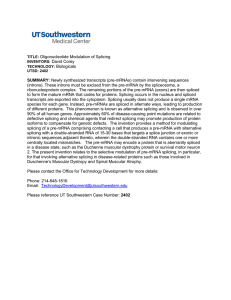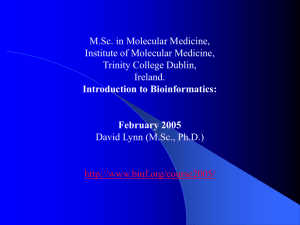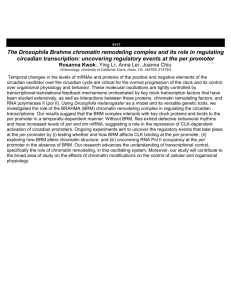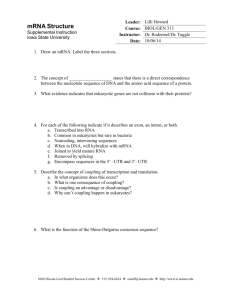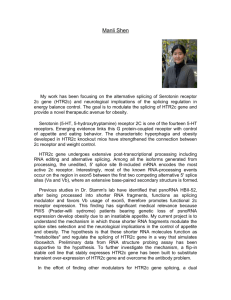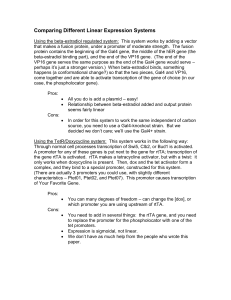Eukaryotic Gene Regulation
advertisement
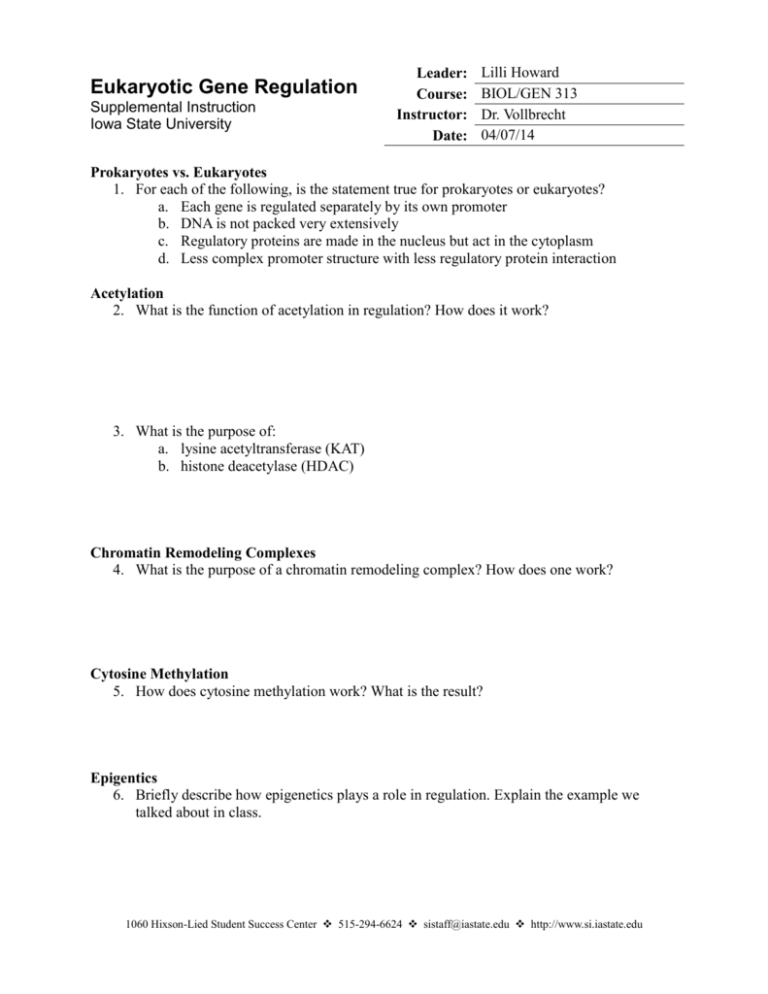
Eukaryotic Gene Regulation Supplemental Instruction Iowa State University Leader: Course: Instructor: Date: Lilli Howard BIOL/GEN 313 Dr. Vollbrecht 04/07/14 Prokaryotes vs. Eukaryotes 1. For each of the following, is the statement true for prokaryotes or eukaryotes? a. Each gene is regulated separately by its own promoter b. DNA is not packed very extensively c. Regulatory proteins are made in the nucleus but act in the cytoplasm d. Less complex promoter structure with less regulatory protein interaction Acetylation 2. What is the function of acetylation in regulation? How does it work? 3. What is the purpose of: a. lysine acetyltransferase (KAT) b. histone deacetylase (HDAC) Chromatin Remodeling Complexes 4. What is the purpose of a chromatin remodeling complex? How does one work? Cytosine Methylation 5. How does cytosine methylation work? What is the result? Epigentics 6. Briefly describe how epigenetics plays a role in regulation. Explain the example we talked about in class. 1060 Hixson-Lied Student Success Center 515-294-6624 sistaff@iastate.edu http://www.si.iastate.edu 7. For each of the following decide if the statement is true or false for eukaryotic transcription initiation. (Ex: GAL4 System) a. (T/F) Very few proteins assemble at the promoter b. (T/F) Many regulators respond to the same signal c. (T/F) Multiple inputs are integrated as the decision to activate a gene is made 8. What are enhancers and insulators and how do they work together in gene regulation? Other concepts to know: Response Elements, Subcellular Localization Post-transcriptional Regulation 9. Breifly summarize the three types of post-transcriptional regulation we talked about in class. Sample Test Questions 10. Which of the following are mechanisms of gene regulation that involve modification of chromatin structure? a) Covalent modification of histone proteins b) Covalent modification of cytosine bases c) Repositioning of nucleosomes by chromatin remodeling complexes d) All of the above e) None of the above 11. Insulators can block the effects of enhancers only when: a) They lie between an enhancer and a promoter b) They lie upstream of a promoter c) They lie adjacent to a promoter d) They lie within the structural genes e) They overlap the enhancer 12. Which of the following is a way that alternative splicing can regulate gene expression? a) Some splicing variants remove the enhancer from the pre-mRNA b) Some splicing variants can leave sequences in the mRNA that include a stop codon, whereas other splicing variants remove that region of the pre-mRNA c) Some splicing variants remove the promoter from the pre-mRNA d) Pre-mRNA splicing can affect the rate of transcription initiation 13. Which of the following means of gene regulation in eukaryotes occurs in the nucleus? a) Alternative pre-mRNA splicing b) siRNA-directed inhibition of translation c) Addition of phosphate groups to proteins d) mRNA degradation e) All of the above 1060 Hixson-Lied Student Success Center 515-294-6624 sistaff@iastate.edu http://www.si.iastate.edu
